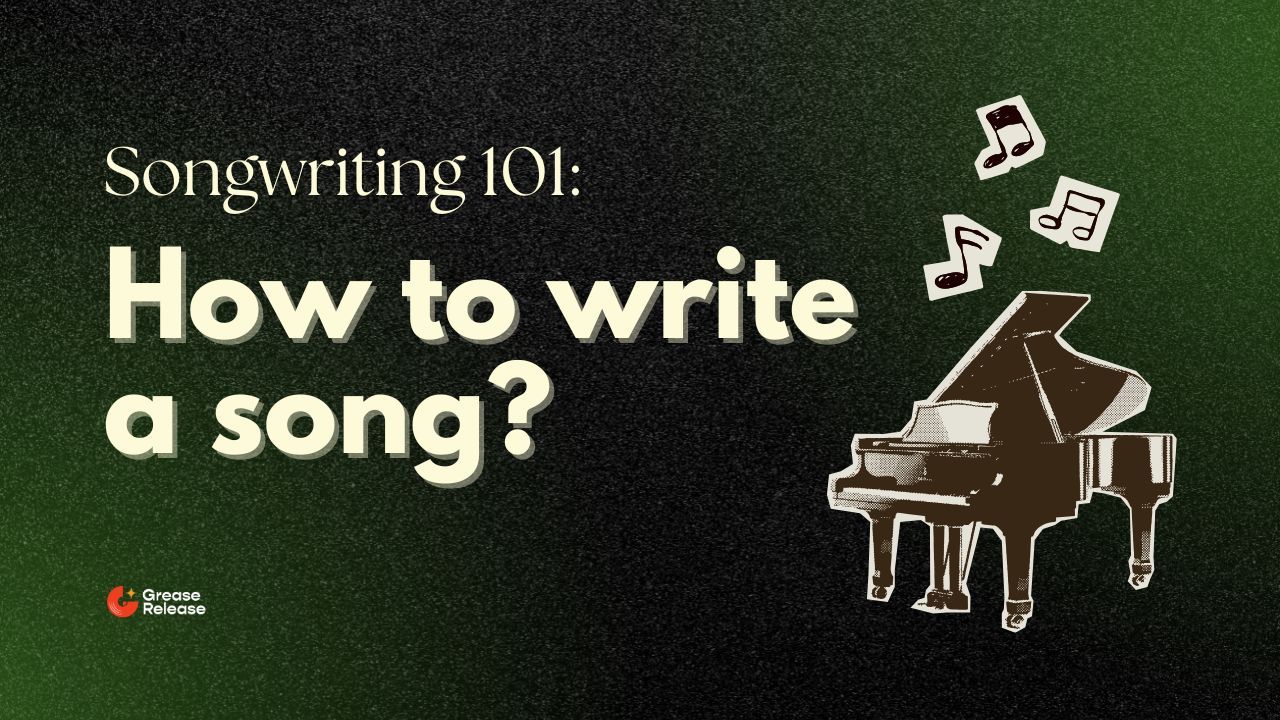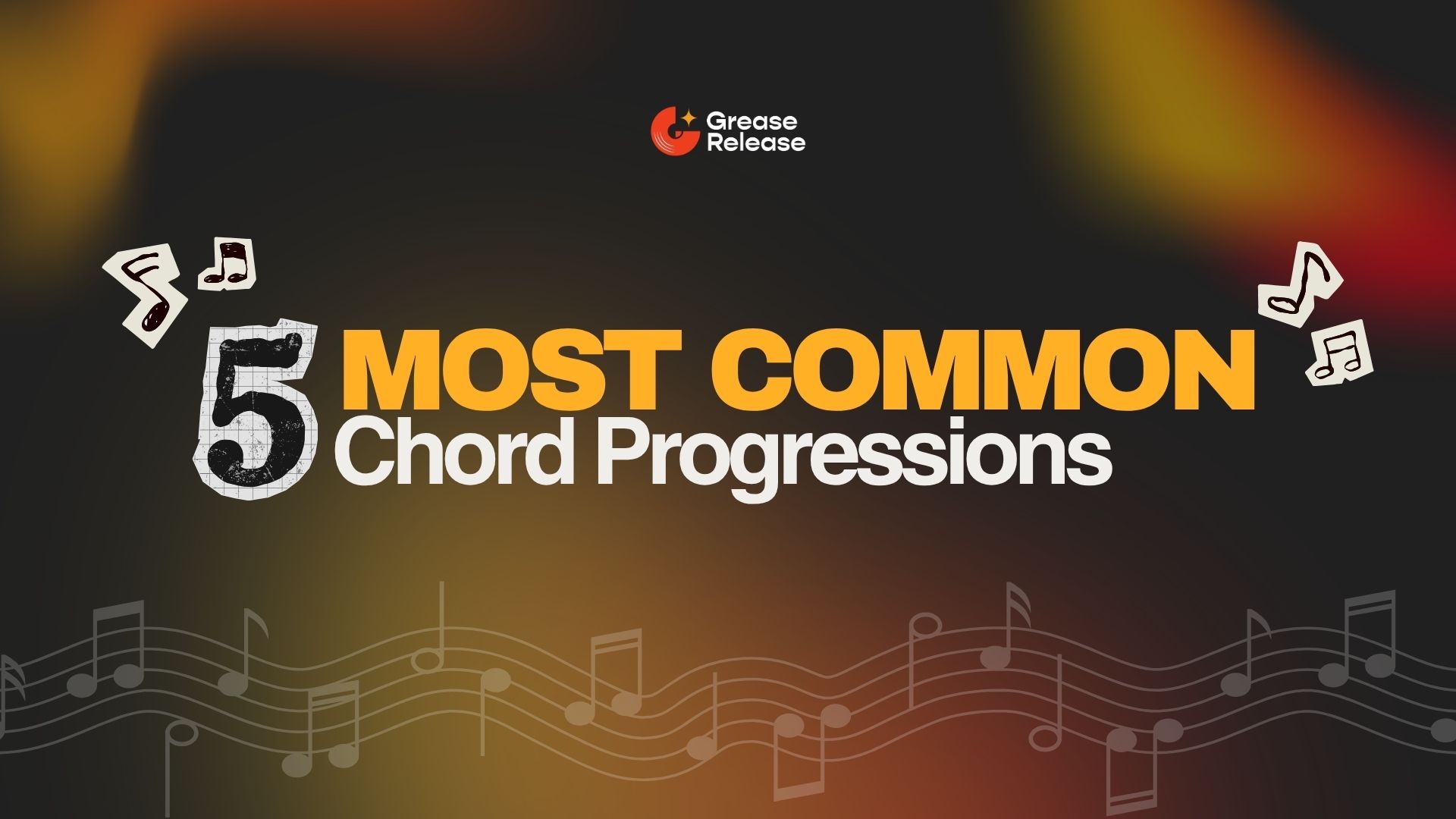
Decoding Song Structures (templates included)
Sep 11, 2025Songwriting 101: How to write a song?
So, what’s the secret to writing a good song? More than clever lyrics or a catchy melody, it all starts with a good song structure. Your song structure is what shapes your ideas into something listeners can actually follow, enjoy, and remember even after they are done listening to the song.
That’s exactly what we’ll cover here. We have broken down the most popular song structures, explained how different genres use them, and even laid out song structure templates you can plug straight into your songwriting process. Think of this as your step-by-step blueprint for turning song ideas into finished tracks!
In this blog, we’re breaking it all down:
- What is Song Structure and Why Does It Matter?
- What are the Different Parts of a Song?
- Popular Song Structures (With Examples)
- How Different Genres Play with Structures
- Creative Ways to Break the Rules
- Conclusion: Make the Rules Work for You
What is Song Structure and Why Does It Matter?
At its core, song structure is simply the order of different sections in your song. It’s the roadmap that tells listeners what to expect and when to expect it. A strong structure keeps people hooked, builds anticipation, and delivers that satisfying “payoff” moment when the chorus hits. Without a proper structure, songs can feel messy or hard to follow, even if the melody is good.
For beginners, learning the structure of a song is like learning the rules of a game: once you understand the basics, you’ll know exactly when to follow them and when to break them.
What are the Different Parts of a Song?
Before we dive into full song structures, it helps to understand the individual parts that make up most songs. Think of these as the puzzle pieces you can arrange and rearrange to create the structure of a song. Each section has its own role, and when combined, they give your song shape, flow, and emotion.

1. Intro:
The intro is like the doorway into your song. It sets the tone, vibe, and tempo right from the start. Sometimes it’s just a simple chord progression or a beat, other times it’s instantly recognizable — think of how Adele’s “Hello” starts. Your goal is to grab attention within seconds.
2. Verse:
The verse is where the storytelling happens. It introduces the characters, mood, or situation of your song. Usually, verses build up to the chorus, giving context to why the chorus feels so powerful. In many songs, verses share the same melody but use different lyrics to move the story forward.
3. Pre-Chorus:
Not every song has a pre-chorus, but when it’s there, it’s like the bridge between the verse and chorus. Its job is to build tension and anticipation so that when the chorus arrives, it feels even bigger. Think of it as climbing up the roller coaster just before the drop.
4. Chorus:
The chorus is the centerpiece of your song—the part that listeners will remember, sing along to, and probably quote on Instagram captions. It usually contains the main hook or message of the track. A great chorus feels like a release after the build-up of the verses and pre-chorus.
5. Bridge:
The bridge is the twist in your story. It usually appears later in the song to break the repetition and give the listener something fresh. Bridges often introduce new melodies, chords, or lyrical perspectives. They keep the song interesting and make the return to the final chorus more powerful.
6. Outro:
The outro is how you say goodbye to your listener. Some songs fade out, giving a dreamy or endless feeling, while others end with a dramatic final chord or lyric. Your outro should leave a lasting impression, whether it’s soft and subtle or bold and decisive.
Popular Song Structures (With Examples)
There are countless ways to create the structure of a song, but some patterns show up again and again because they simply work. These frameworks help guide listeners through your story and give them those satisfying moments of payoff. Here are five of the most basic song structure templates you’ll run into, and some famous examples to show how they work in action.
1. Verse – Chorus – Verse – Chorus – Bridge – Chorus
This is the classic pop formula and easily the most common pop song structure template today. The verses tell the story, the chorus drives home the hook, and the bridge offers a twist before one final chorus. It’s reliable, familiar, and works across nearly every genre.

Examples:
- “Shape of You” – Ed Sheeran
- “Blank Space” – Taylor Swift
- “Someone Like You” – Adele
This basic song structure template is a great starting point for beginners because it naturally flows and keeps listeners hooked until the very end.|
2. Verse – Chorus – Verse – Chorus
This is a simpler version of the pop song structure template — no bridge, no extra layers. It’s short, punchy, and straight to the point, which is why it’s so popular in rock, punk, and radio-friendly tracks. It works best for high-energy songs that don’t need much variation to keep people engaged.

Examples:
- “Smells Like Teen Spirit” – Nirvana
- “All the Small Things” – Blink-182
- “Rolling in the Deep” – Adele
If you want something quick and catchy without overcomplicating it, this pop song structure template is perfect.
3. Verse – Verse – Bridge – Verse
Before the dominance of pop and rock, this was one of the most common and basic song structures, especially in jazz, standards, and classic pop. In this form, the verses carry most of the melody and story, while the bridge (the “B” section) provides a refreshing contrast before returning to the verse.

Examples:
- “Yesterday” – The Beatles
- “Over the Rainbow” – Judy Garland
- “Let It Be” – The Beatles (a variation of AABA)
This style is a little less common in modern pop but is fantastic for ballads and storytelling songs.
4. AAA / Folk Style
This structure of a song is as simple as it gets. Every section (the “A”) has the same melody, but the lyrics change each time. It’s a storytelling-heavy style, often used in folk and singer-songwriter genres. The power comes not from repetition of a chorus, but from the evolving lyrics.

Examples:
- “Blowin’ in the Wind” – Bob Dylan
- “Scarborough Fair” – Simon & Garfunkel
- “The Times They Are a-Changin’” – Bob Dylan
This type of song structure template is less about hooks and more about delivering a message or narrative.
5. Through-Composed
Through-composed songs don’t repeat sections at all. Instead, the music keeps evolving from start to finish, like a story with no repeated chapters. This makes it perfect for experimental, progressive, or theatrical music, but it’s harder to pull off for mainstream pop since listeners often crave repetition.

Examples:
- “Bohemian Rhapsody” – Queen
- “Paranoid Android” – Radiohead
- “Happiness Is a Warm Gun” – The Beatles
This structure allows for the most creativity and unpredictability but can be challenging for beginners.
How Different Genres Play with Structures
Pop
Pop thrives on the verse–chorus structure, delivering hooks that listeners can sing instantly. Choruses are often repeated several times for maximum impact, making the song feel familiar on the first listen.
Examples: “Shake It Off” – Taylor Swift, “Uptown Funk” – Mark Ronson ft. Bruno Mars, “Bad Guy” – Billie Eilish.
Rock
Rock songs often play with longer intros, guitar solos, or instrumental breaks, giving musicians space to show off. The verse–chorus format is still common, but the energy comes from live-band dynamics and raw power.
Examples: “Sweet Child O’ Mine” – Guns N’ Roses, “Smells Like Teen Spirit” – Nirvana, “Hotel California” – Eagles.
Hip-Hop
Hip-hop is verse-driven, with rappers using verses to deliver flows, wordplay, and storytelling. Hooks or choruses are shorter, repeated phrases to give listeners a break between verses. Sometimes, the beat itself acts like a chorus.
Examples: “Lose Yourself” – Eminem, “HUMBLE.” – Kendrick Lamar, “God’s Plan” – Drake.
EDM (Electronic Dance Music)
EDM builds around drops and builds, not traditional verses and choruses. The energy climbs through a build-up, explodes at the drop, and resets for the cycle to repeat. It’s all about tension and release, designed to move a crowd.
Examples: “Animals” – Martin Garrix, “Titanium” – David Guetta ft. Sia, “Wake Me Up” – Avicii.
Indie / Experimental
Indie and experimental artists often bend or break structural rules, skipping choruses or adding unusual sections. The focus is on creating mood and uniqueness rather than radio-friendliness.
Examples: “Pyramid Song” – Radiohead, “Skinny Love” – Bon Iver, “Holocene” – Bon Iver.
The cool part? Once you learn the basics, you can study how your favorite genre approaches the structure of a song and borrow what works for your own songs.
Creative Ways to Break the Rules
While structure is helpful, the most exciting songs often come from bending or flipping those rules. For example, some songs start with the chorus right away, giving you the hook from the very first second. Others skip the bridge or replace it with an instrumental solo. Some tease the chorus in the intro so listeners are hooked early.
Remember: The structure of a song isn’t there to limit you—it’s there to guide you. Feel free to experiment. Sometimes the most memorable tracks are the ones that surprise us.
Conclusion: Make the Rules Work for You
At the end of the day, a song structure is just a tool. It helps you shape your ideas into something listeners can follow and enjoy. But don’t feel like you need to stick to a formula forever. Some of the greatest songs in history work because the artists dared to bend the rules. My advice? Start simple, learn the basics, and then experiment. Who knows—your next song could be the one that makes people hit replay over and over again.
We at GreaseRelease, have a bunch of curators on our network who are looking for new & exciting music to push on their massive playlists. If you make music and want to reach a wider audience, check out our submission platform and get a chance to reach millions of listeners! Submit your tracks now!
Don't miss my newsletter!
Join me on a music entrepreneurship journey with new tips and tricks delivered straight to your inbox.
We hate SPAM. We will never sell your information, for any reason.




